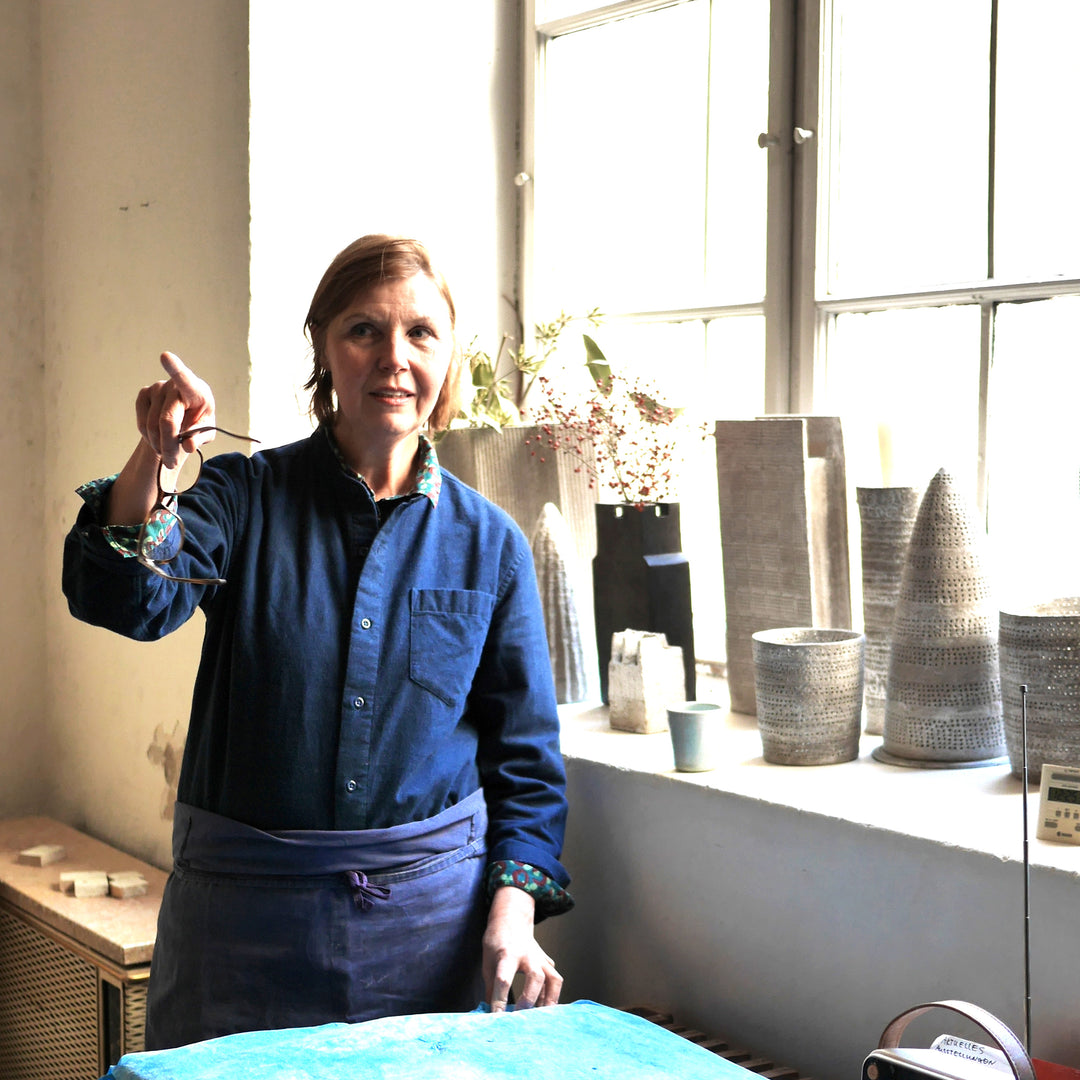


Christine Wagner (*1959 in Munich) completed her ceramic apprenticeship from 1980 - 1983 with Yasoji Sasaki in Toki-shi, Japan. This was followed by study trips to Korea and China and the continuation of her ceramic apprenticeship until 1985 in Landshut, Germany. Christine Wagner received her ceramics diploma from the University of Art in Linz, Austria in 1989.
She has been running her workshop studio in Munich since 1990 and since 2010 Christine has been teaching at the technical college for design in Karlsfeld and Unterschleißheim near Munich (since 2014).
Christine Wagner's excellent works are regularly shown in exhibitions and can be found in private and public collections (Die Neue Sammlung, Pinakothek der Moderne, Munich; Museum für Kunst und Gewerbe, Hamburg; Bavarian State Chancellery, Munich; Peter Siemssen Foundation, Wesenberg / Ratzbek).
Christine about her work: "The focus is on the exploration of simple geometric shapes: the ground plan defines the form. By structuring the surfaces, there is a multitude of possibilities to vary the shape of the vessels. Minimal interventions allow the composition of the forms to be reassembled again and again.
Clay as a material, surface treatment and firing with an open flame have been my field of research for many years. The self-mixed, coarse-grained clay made of red and grayish clay from the Westerwald, the surface design with kaolin, the use of various white engobes and the use of metal oxides for the dark surfaces result in the specific appearance of my ceramics.
All the elements work together. This unique quality drives me to continue working with clay as a material, because it enables the combination of shaping and the change in materiality through the melting process in the kiln."



























